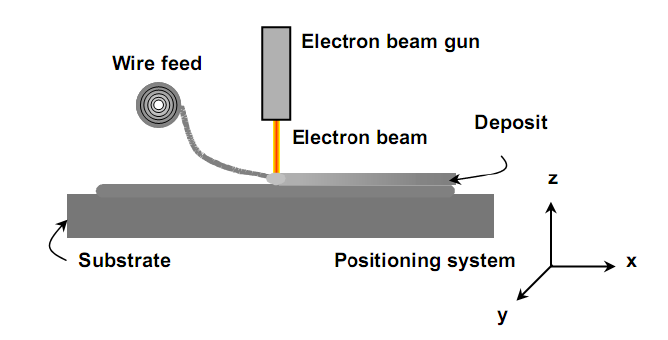
Electron Beam Freeform Fabrication (EBF3) is an additive manufacturing process (3D printing) being developed by NASA to create metal parts in space. This process uses CAD drawings and a 3D printer to create parts and tools, which will save NASA time and money by allowing scientists to create parts as needed instead of hauling materials on the space shuttle, which can be quite costly.
How Electron Beam Freeform Fabrication (EBF3) Works
EBF3 was primarily developed by Karen Taminger. EBF3 uses a focused electron beam in a vacuum environment to create a molton pool on a metal substrate. First, a model is created in CAD software and the file is translated into G-code. The G-code is sent to the printer. Metal wire is fed into the printer, forming a molten pool in a layer, which solidifies after the electron beam has passed. Once the layer has solidified, another layer is printed, until the process is complete and the part is created.
Other Uses for EBF3
EBF3 can also be used to manufacture aviation parts. Parts can be created using the EBF3 and will save money by using less material, less electricity, and creating less waste. The first parts created by this technology will be simple, but in the future, it can allow for more complex parts that will improve energy, effectiveness, and endurance.
Other NASA 3D Printing Projects
NASA is also funding a 3D pizza printer that will print out pizza in space. The pizza printer uses oil and powders containing protein and carbohydrates to create the ingredients from scratch. NASA uses these powders, taking out all the moisture, so that the foodstuff has a shelf life of at least five years and still maintains nutritional value.
To learn more about the latest in 3D Printing, check out our 3D printing.
